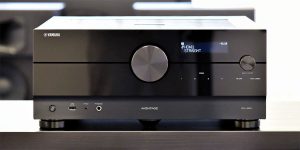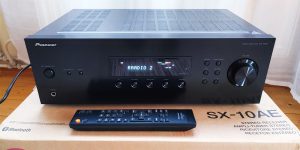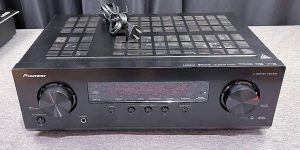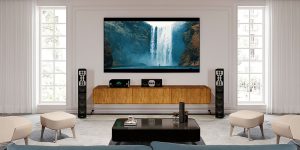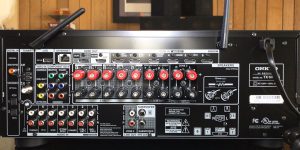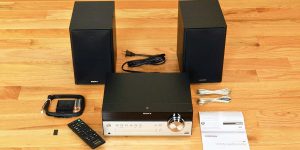When comparing Marantz vs. Yamaha receivers, it isn’t easy to remain objective. But, selecting the optimal representatives in each category for you, I tried to be just like that. The point is that the brands are mega-popular among users, and since they produce far-from-budget AVR models and have a unique sound that fans of one and the other appreciate so much, these same fan clubs are fiercely ready to defend their favorite brand. Nevertheless, I’m sure you’ll be able to make your choice by familiarizing yourself with the history of Marantz and Yamaha in this comparative review, understanding their intended purpose, and studying the differences in technical specifications. It will be interesting.
Brief history of Marantz
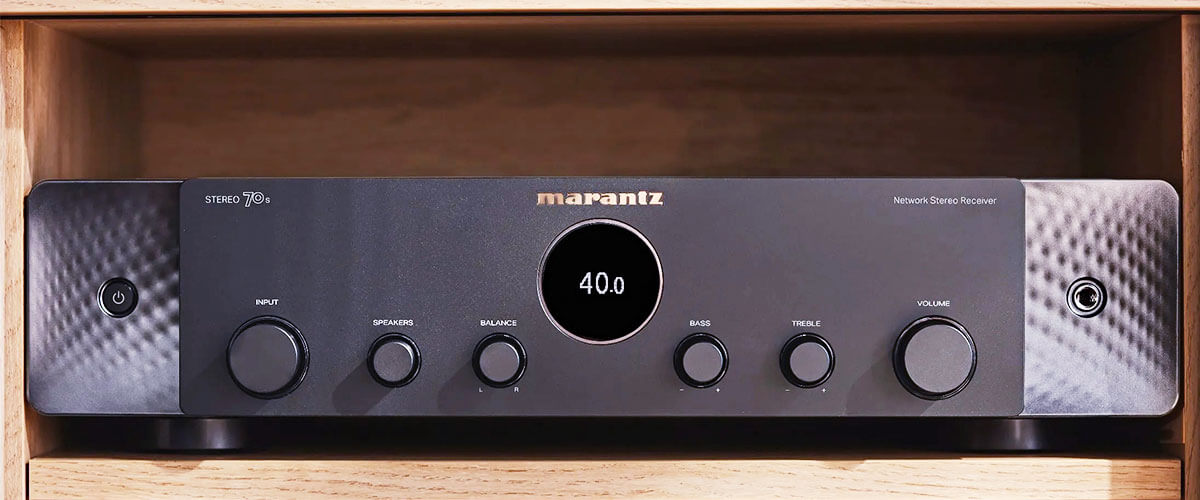
In the middle of the last century, when vinyl turntables were popular, amplifiers were not as advanced as they are today. And for that reason, amateur musician Saul Bernard Marantz created a new generation of amplifiers in his kitchen, the Audio Consolette, which quickly gained popularity and was the start of the now-famous company in 1953.
In the ’60s, Marantz focused on producing just this kind of equipment: the Model preamplifier, Model 9 power amplifier, and Model 10B FM stereo tuner winning worldwide acclaim for their unique dynamic sound effect.
In 2023, celebrating its 70th anniversary, the brand is considered the most elite, producing only expensive products with high-end components and still worships analog sound. However, it keeps up with modern technology.
I highly recommend that you read the history of Marantz in more detail by following this link.
Brief history of Yamaha
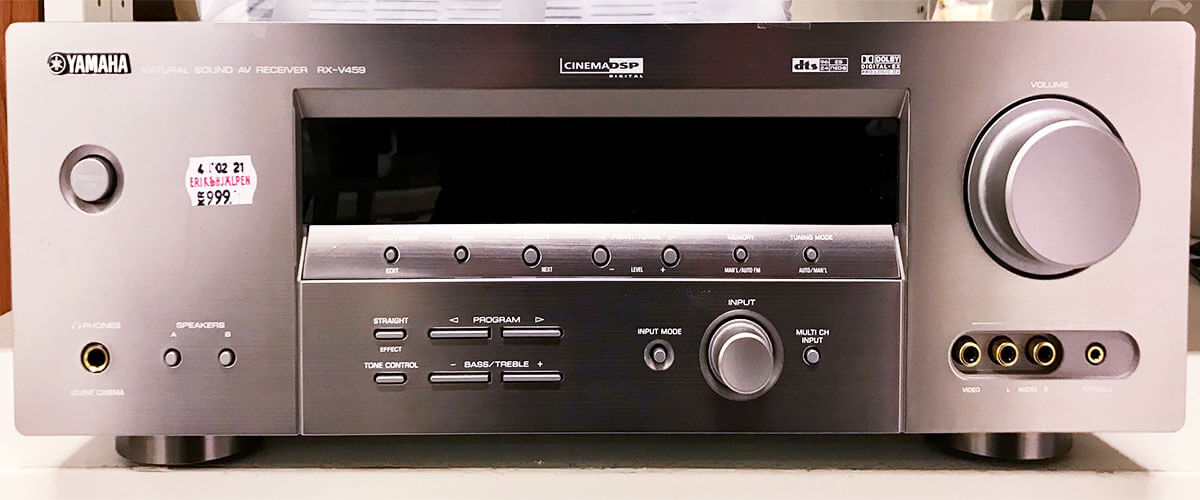
The history of the Yamaha brand has deeper roots, originating in 1887 when Japanese Torakusu Yamahoi founded Nippon Gakki Co. Ltd.” Initially, Torakusu, with his engineering background, was repairing non-musical equipment until he was accidentally invited to repair a reed organ.
Already in the 1920s, the company focused on the production of gramophones. And further, as musical equipment and sound technology evolved in the 90s, it took a leading position in producing receivers for home theaters.
The modern name Yamaha, the company received after the death of its creator after celebrating its 100th anniversary.
Who does not know this brand today? Yamaha produces musical instruments, acoustic equipment (just worth its AV-receivers series Aventage), and even motorcycles. Truly, a piece of history, which you can read more about at this link.
General sound differences between Yamaha and Marantz receivers
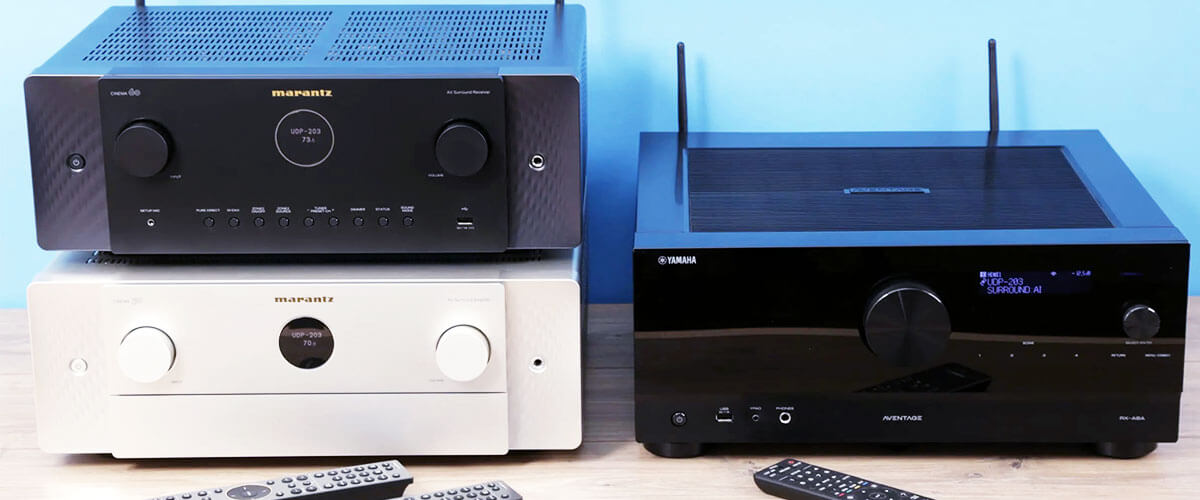
It is always quite difficult to distinguish some common, pronounced sound differences between brands because there is a rule that the sound of receivers of the same price category will be practically indistinguishable (with proper tuning/calibration).
But not this time, as we are considering the confrontation of rather unique-sounding Marantz vs. Yamaha receivers, famous among their fans for this very thing. Nevertheless, the sound picture will largely depend on your additional equipment (sound source, speakers, room, etc.), and the sound quality of the brands is really on the same level.
Some users note that in stereo mode, Yamaha wins, while Marantz, as well as Denon, shows itself better in multichannel mode. I still note that true audiophiles appreciate Marantz because its warm sound is very suitable for vinyl. At the same time, I agree that Yamaha’s neutral, even cool, sound is good for digital audio formats.
Like Denon, Marantz receivers have the Audyssey room correction system that performs better than Yamaha’s YPAO.
Based on all of this, if you are choosing between brands, not models, and not really looking at the financial component, I would advise you to choose just what you like more aesthetically and corresponds to the desired capabilities of the receiver.
Our criteria for choosing Yamaha and Marantz receivers for comparison
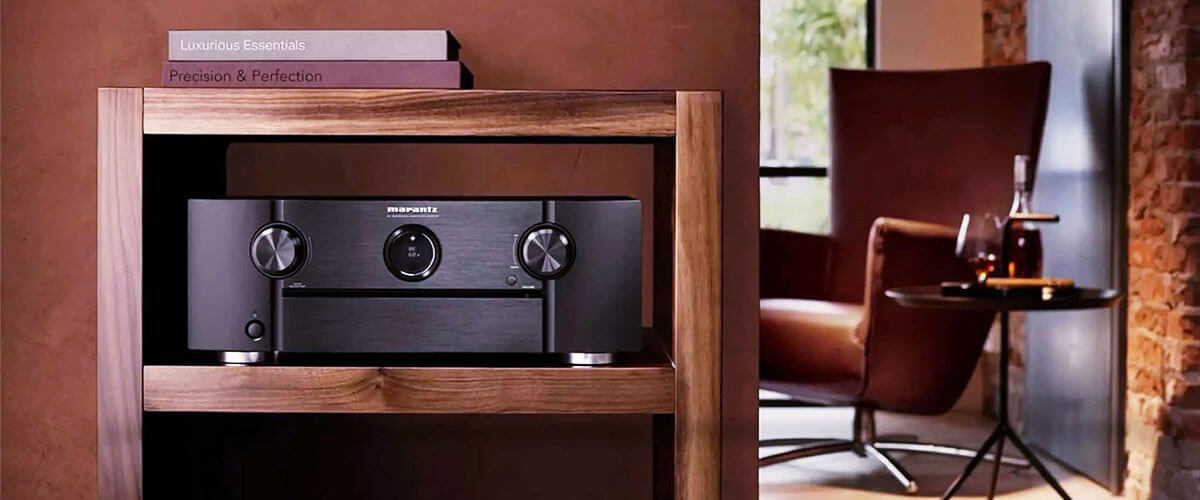
I tried to select optimal models in different price segments, and they are designed for different purposes and tasks.
The criteria were the following factors:
- Listening experience.
- Availability of necessary built-in features (support for modern video technologies, surround sound formats, Bluetooth, Ethernet/Wi-Fi/streaming services, etc.).
- Sufficient number of input and output connections.
- Price.
Mid-priced Marantz and Yamaha AVRs comparison
Marantz CINEMA 60 vs. Yamaha RX-A6A
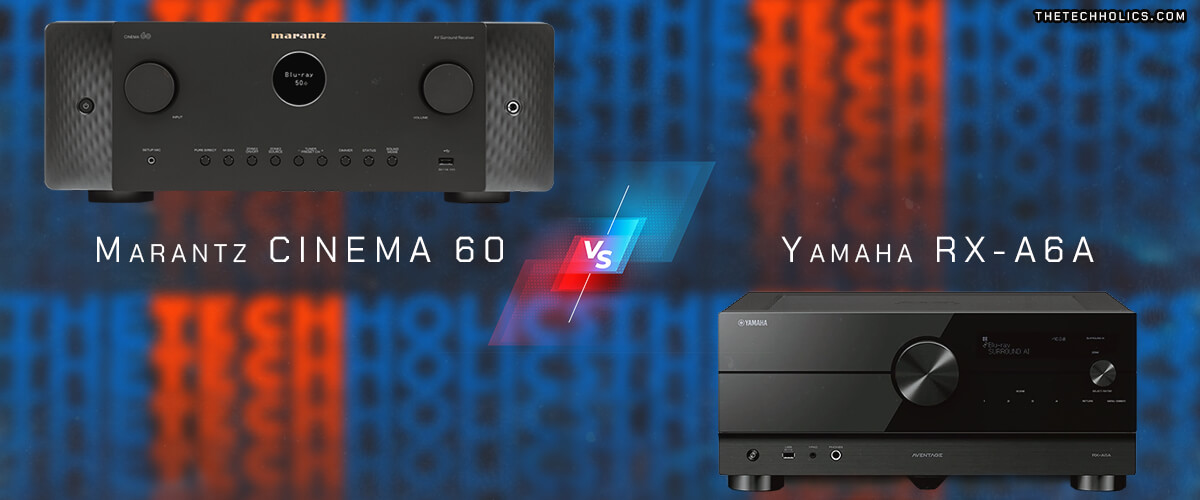
The first pair in the ring in the Yamaha vs. Marantz confrontation are two extremely similar models, the CINEMA 60 and the RX-A6A. Please note that we will discuss the Yamaha 2020 model exclusively for the US market, not to be confused with the 9-channel Aventage series model.
Both receivers have 7.2 channels of amplification, 100W/8Ohm power, and support Dolby Atmos and DTS:X surround sound formats. At the same time, Marantz is more expensive than Yamaha by several hundred dollars. Let’s see what accounts for this difference.
Let’s start with video capabilities. The RX-A6A has 7/3 HDMI ports, all supporting 8K resolution video. But upscaling is only possible up to 4K. Meanwhile, the Marantz has only 6/2 HDMI connectors, and only 3 of them allow 8K video streaming. But upscaling is also possible up to 8K. Pay attention to such subtleties because it may be important when watching movies.
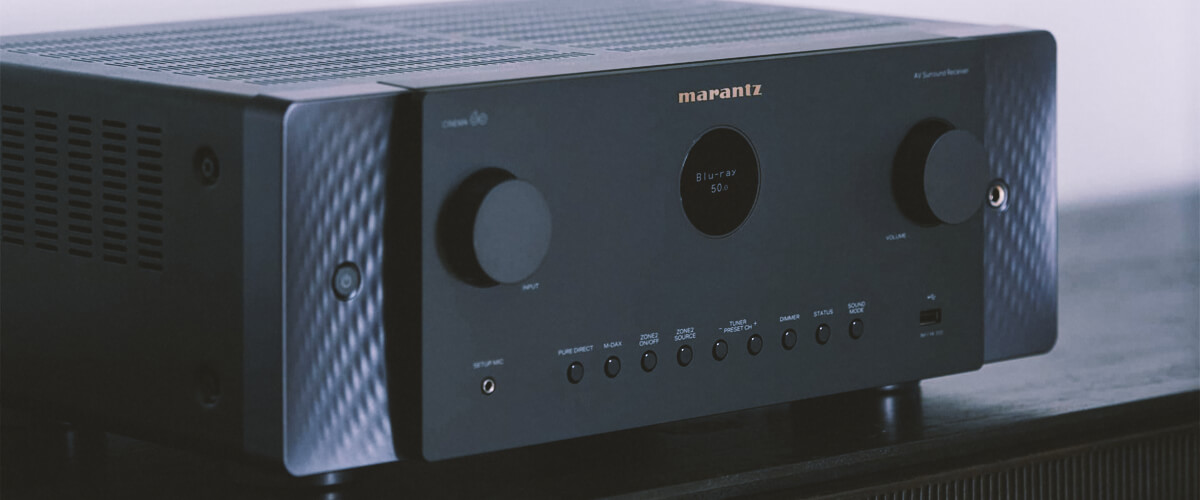
As for the sound, there are also differences. For example, Yamaha’s Bluetooth supports the AAC codec, which is important for Apple users, while Marantz works only with the usual SBC. The RX-A6A has 2.2 RCA pre-outputs, while the CINEMA 60 has 7.2 of them. Yamaha has better DAC Specs (384 kHz/32 Bit).
But keep in mind that Marantz, as I mentioned, uses the highest quality internal parts, so you can’t see what you’re paying more for. So, the CINEMA 60 uses a current feedback topology. This allows it to meet Super Audio requirements. Also, the Hyper Dynamic Amplifier Module is superior to conventional DUT ICs. The Yamaha RX-A6A can’t boast of any of that.
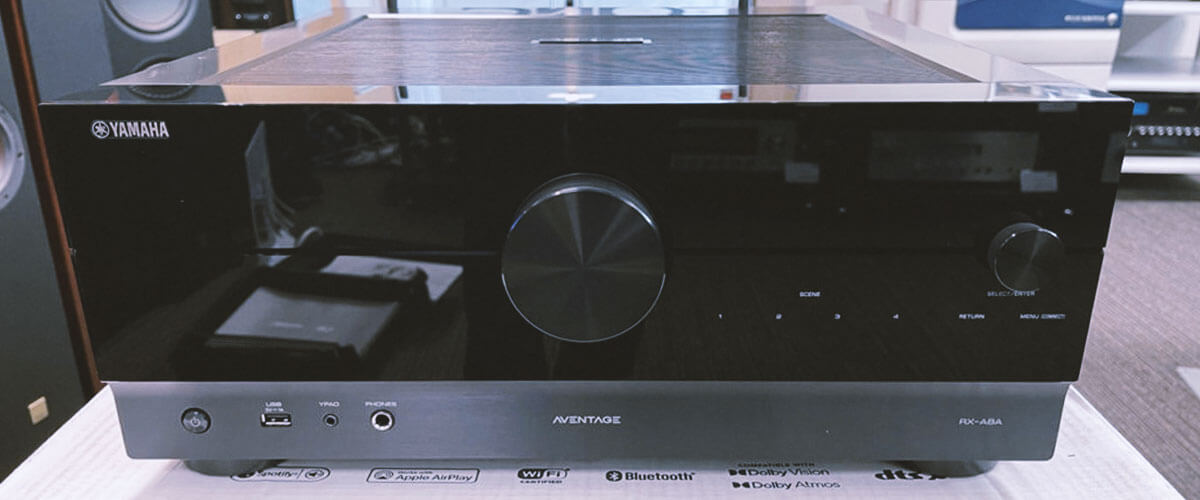
It is quite obvious that both receivers will find their buyers because they meet modern standards to a greater or lesser extent but in all parameters. I recommend you carefully study the specifications of the Marantz CINEMA 60 and Yamaha RX-A6A to make your choice. But I am sure you will be satisfied either way.
Marantz CINEMA 60 key specs
- Channels: 7.2.
- Power output: 100W/8 Ohm, 140W/6 Ohm.
- HDMI inputs/outputs: 6/2.
- Video functions: 8K/60Hz, 4K/120Hz pass-through, 1080P/4K to 8K HDMI upscaling.
- Bluetooth/Wi-Fi: yes/yes.
- Streaming services: AirPlay2, TuneIn, Spotify, Pandora, SiriusXM, Amazon Music HD, TIDAL, Deezer, iHeart Radio, Napster, SoundCloud, Mood Mix.
- Supports: HDMI ARC, HDMI eARC, HDMI CEC, HDCP2.3, HDR10, HDR10+, HLG, Dynamic HDR, Dolby Vision.
- Surround sound: DTS HD Master, DTS:X, DTS Neural:X, DTS Virtual:X, Dolby TrueHD, Dolby Atmos, Dolby Atmos Height Virtualization, Dolby Atmos Music, Dolby Surround, IMAX Enhanced.
Yamaha RX-A6A key specs
- Channels: 9.2.
- Power output: 150W/8 Ohm.
- HDMI inputs/outputs: 7/3.
- Video functions: 8K/60Hz, 4K/120Hz, 4K/60Hz pass-through, video upconversion (up to 1080p and 8K) for analog and HDMI sources.
- Bluetooth/Wi-Fi: yes/yes.
- Streaming services: AirPlay2, Deezer, Tidal, Pandora, SiriusXM, Napster, SoundCloud, Amazon Music, Amazon Music HD, Mood mix.
- Supports: HDMI ARC, HDMI eARC, HDMI CEC, HDCP2.3, HDR10, HDR10+, Dolby Vision.
- Surround sound: DTS HD Master, DTS Neural:X, Dolby TrueHD, Dolby Surround, Dolby Digital Plus, Dolby Atmos Height Virtualization, Dolby Atmos, Auro-3D
Marantz CINEMA 60
Yamaha RX-A6A
Premium Marantz and Yamaha AVRs comparison
Marantz SR8015 vs Yamaha RX-A8A
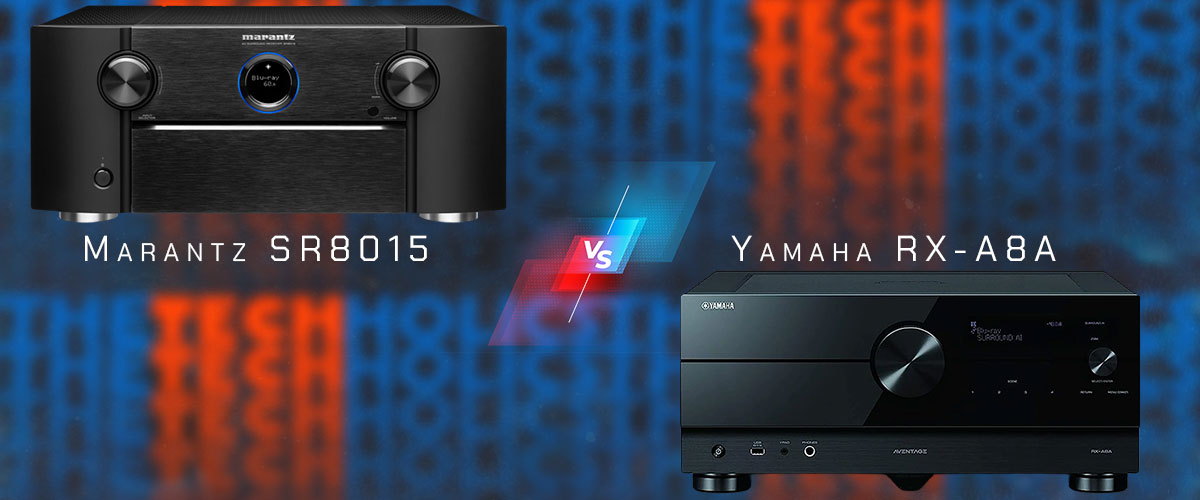
In the premium segment, I chose the SR8015 (2020) vs. RX-A8A (2021) as the leader of both brands. And although Marantz once again exceeds its competitor in price, you can immediately give it a point for being able to expand an 11-channel system to 13 channels. Yes, the RX-A8A provides 150W versus the SR8015’s 140W, but I didn’t notice any difference in practice. At high volumes, both receivers sound powerful, rich, and impressive. Let’s move on.
The Marantz also supports a wider range of surround sound formats, including DTS Virtual:X and IMAX Enhanced. Although it also has surround sound available without height channels in a 9.2 configuration.
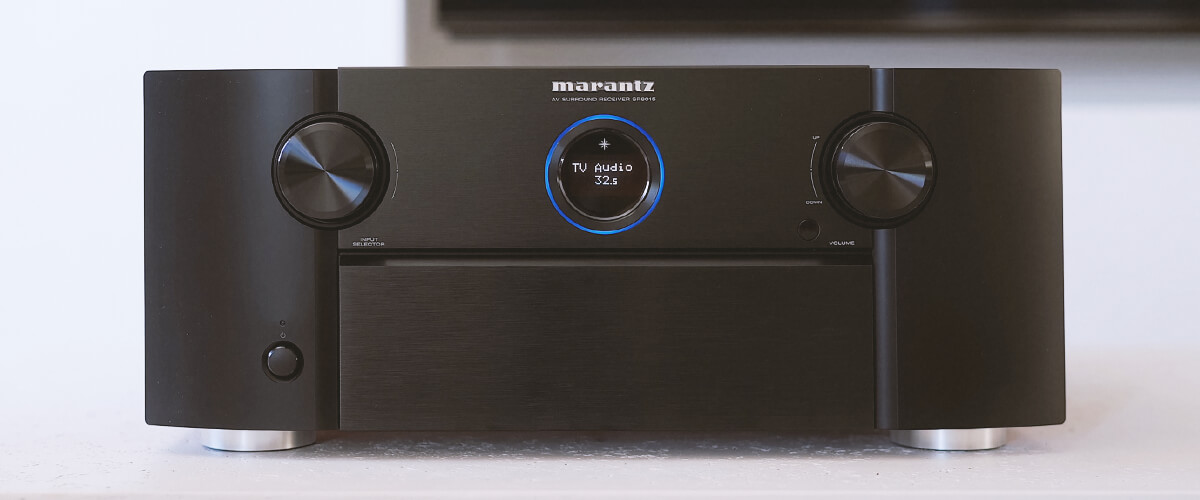
Yamaha also lost out in the area of connector count, not avoiding HDMI (7/3 vs. 8/3), and yes, scaling lower-resolution video is only possible up to 4K (the SR8015 has up to 8K). But all HDMI RX-A8A pass 8K video, while SR8015 has only one.
If you like digital music, the RX-A8A has the edge in Music Playback via USB (384 kHz/32 Bit). But the SR8015 has 7.1 analog inputs if you want to use your player’s high-end DACs. At the same time, Yamaha is the owner of XLR outputs. Of course, all of this is important if you’re into the finer points of audio.
In addition to the advantages of Marantz described in the previous comparison, this model has a toroidal transformer. Its cost is much higher than conventional transformers because it is silent.
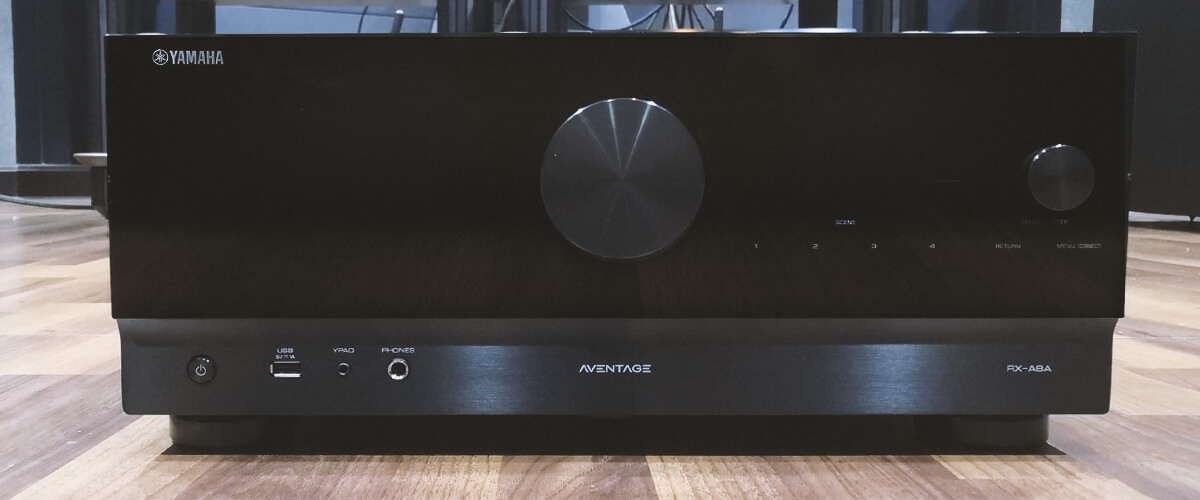
Choosing Marantz or Yamaha is up to you, but I think it’s a pretty interesting confrontation of expensive, high-quality, and high-end AVRs. Each of them can offer you something unique, customized just for you.
Marantz SR8015 key specs
- Channels: 11.2.
- Power output: 140W/8 Ohm, 175W/6 Ohm.
- HDMI inputs/outputs: 7/2.
- Video functions: 8K/60Hz, 4K/120Hz pass-through, 1080P/4K to 8K HDMI upscaling, analog to HDMI video conversion.
- Bluetooth/Wi-Fi: yes/yes.
- Streaming services: AirPlay2, TuneIn, Spotify, Pandora, SiriusXM, Amazon Music HD, TIDAL, Deezer, iHeart Radio, Napster, SoundCloud, Mood Mix.
- Supports: HDMI ARC, HDMI eARC, HDMI CEC, HDCP2.3, HDR10, HDR10+, HLG, Dynamic HDR, Dolby Vision.
- Surround sound: DTS HD Master, DTS:X, DTS Neural:X, DTS Virtual:X, DTS:X Pro, Dolby TrueHD, Dolby Atmos, Dolby Atmos Height Virtualization, Dolby Atmos Music, Dolby Surround, IMAX Enhanced, Auro 3D.
Yamaha RX-A8A key specs
- Channels: 11.2.
- Power output: 150W/8 Ohm.
- HDMI inputs/outputs: 7/3.
- Video functions: 8K/60Hz, 4K/120Hz, upscaling up to 8K.
- Bluetooth/Wi-Fi: yes/yes.
- Streaming services: AirPlay 2, Spotify, TuneIn, Deezer, Tidal, Netflix, Amazon Prime.
- Supports: HDMI ARC, HDMI eARC, HDMI CEC, HDCP2.3, HDR10+, Dolby Vision.
- Surround sound: DTS:X, DTS Virtual:X, Dolby Atmos, DTS HD Master, Dolby TrueHD, Auro 3D.
Marantz SR8015
Yamaha RX-A8A
Budget Marantz and Yamaha AVRs comparison
Marantz NR1510 vs Yamaha RX-V385
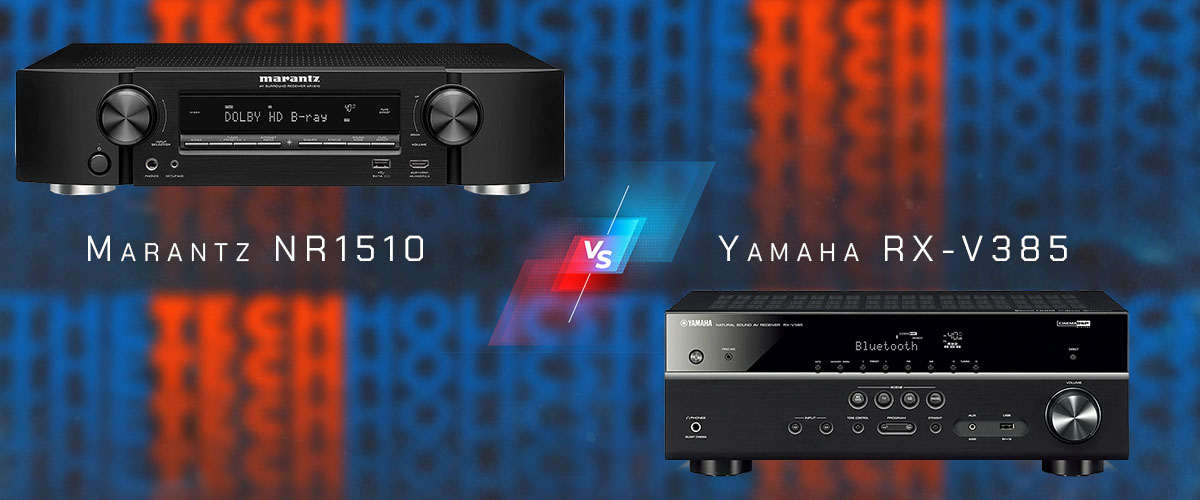
Things are usually a bit easier with the budget segment. Let’s see if that’s the case in the Marantz versus Yamaha war. The NR1510 and RX-V385 are pretty old models, released in 2019 and 2018. They are 5-channel receivers, but Marantz has a more expensive one (Surprise? No). Still, you can connect 2 subwoofers to it, which can already enrich the rather simple soundscape of a basic surround sound system. But Yamaha has a Bi-amping function, which the competitor does not have.
The NR1510 has a narrow profile and will suit those with limited home theater space. But it only reproduces 50W of power, while the RX-V385 delivers 80W per channel.
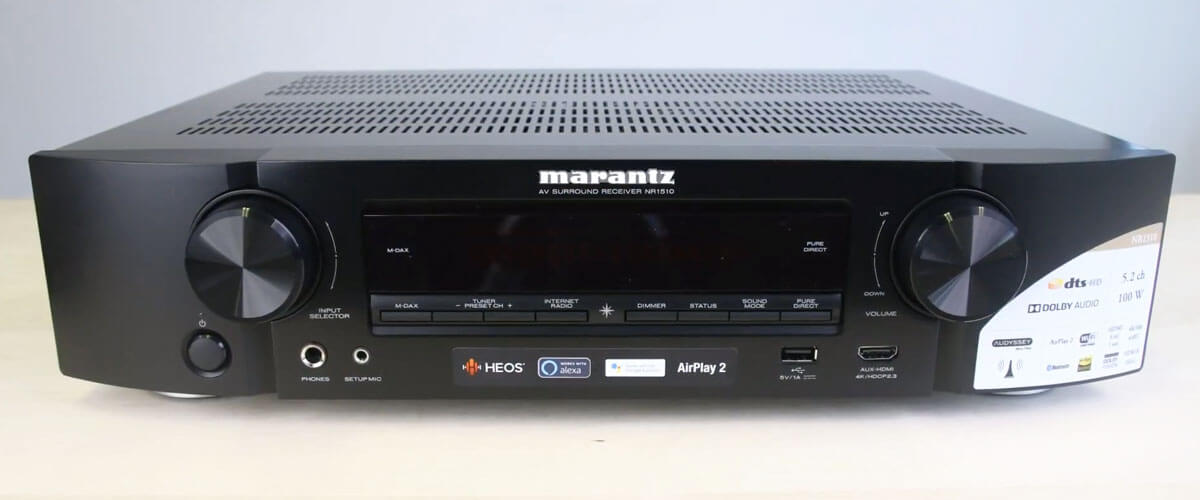
Despite its slim profile, the Marantz has more HDMI ports (6/1 vs. 4/1) but can’t upscale video quality to 4K like the Yamaha.
The RX-V385 has a better DAC (384 kHz/32 Bit), but the NR1510 supports voice assistants and streaming services and has a built-in multi-room broadcasting ecosystem, HEOS, and AirPlay 2. Yamaha, my dears, has nothing but Bluetooth, which simultaneously only works with the SBC codec.
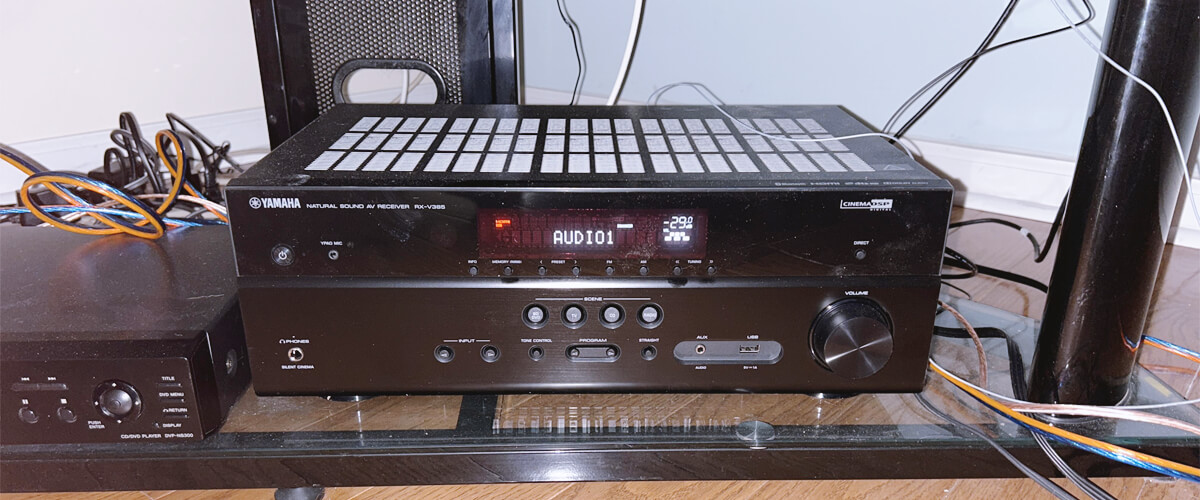
Overall, I would conclude it this way. If you want to watch movies with surround sound but loud enough to disturb your neighbors – choose RX-V385. But if you dream of an inexpensive universal device that can improve your movie-watching experience and at the same time listen to music in all available modern ways – choose NR1510.
Marantz NR1510 key specs
- Channels: 5.2.
- Power output: 85W/8 Ohm, 100W/6 Ohm.
- HDMI inputs/outputs: 6/1.
- Video functions: 4K/60Hz pass-through.
- Bluetooth/Wi-Fi: yes/yes.
- Streaming services: AirPlay2, TuneIn, Spotify, Pandora, SiriusXM, Amazon Music HD, TIDAL, Deezer, iHeart Radio, Napster, SoundCloud, Mood Mix.
- Supports: HDMI ARC, HDMI eARC, HDMI CEC, HDCP2.2, HLG, Dolby Vision.
- Surround sound: DTS HD Master, Dolby TrueHD, Dolby TrueHD, Dolby ProLogic II.
Yamaha RX-V385 key specs
- Channels: 5.1.
- Power output: 70W/8 Ohm.
- HDMI inputs/outputs: 4/1.
- Video functions: 4K/60Hz pass-through, upscaling up to 4K.
- Bluetooth/Wi-Fi: yes/no.
- Streaming services: has not.
- Supports: HDMI ARC, HDMI eARC, HDMI CEC, HDCP2.3, HDR10+, Dolby Vision.
- Surround sound: Dolby Digital Plus, DTS HD Master, Dolby TrueHD.
Marantz NR1510
Yamaha RX-V385
Stereo Marantz and Yamaha receivers comparison
Marantz NR1200 vs Yamaha R-N303
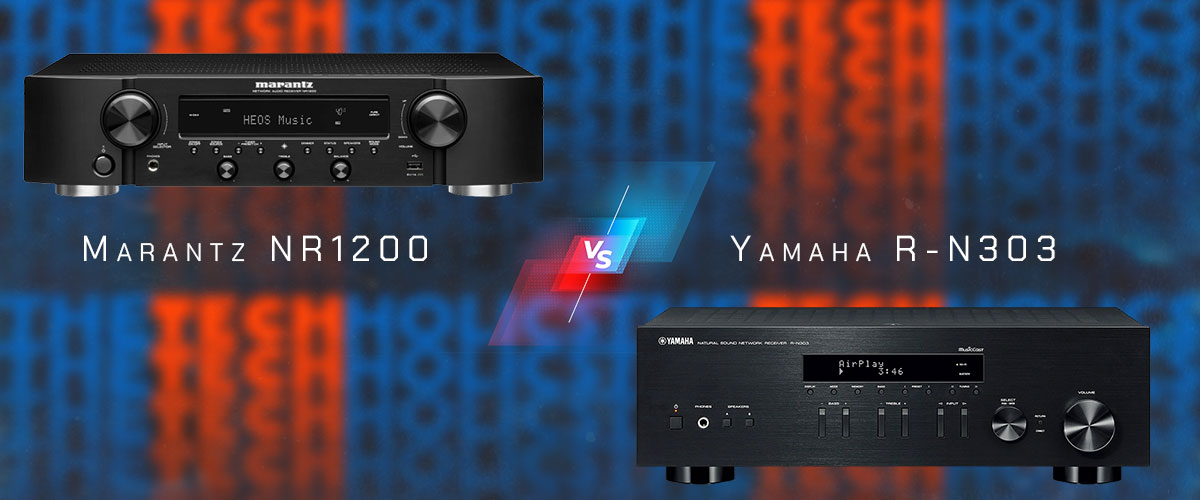
Finishing the Marantz versus Yamaha competition is the battle of the stereo receivers. Once again, the NR1200 (2019) exceeds the R-N303 (2017) cost. But here, at least, it’s clear why. After all, Marantz was one of the first to introduce video streaming capabilities into its 2-channel receivers, equipping the model with 5/1 HDMI ports (4K video available). Yamaha, meanwhile, focused exclusively on stereo sound.
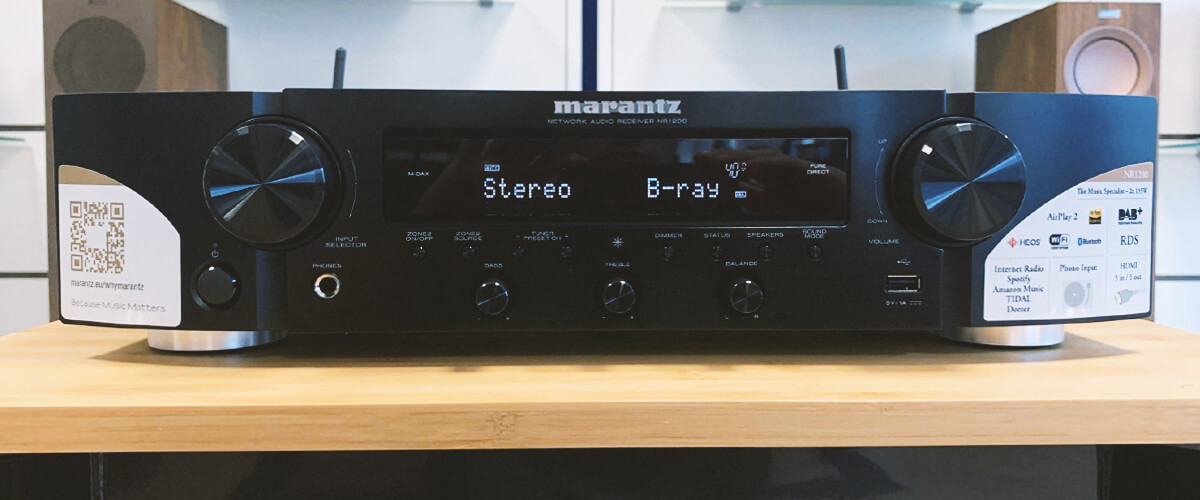
Both receivers are equipped with Wi-Fi, AirPlay 2, a built-in system for multi-room streaming (HEOS for Marantz and MusicCast for Yamaha), and Bluetooth. They support many streaming services (Spotify Connect, Deezer, Pandora, etc.). The NR1200 also works with voice assistants.
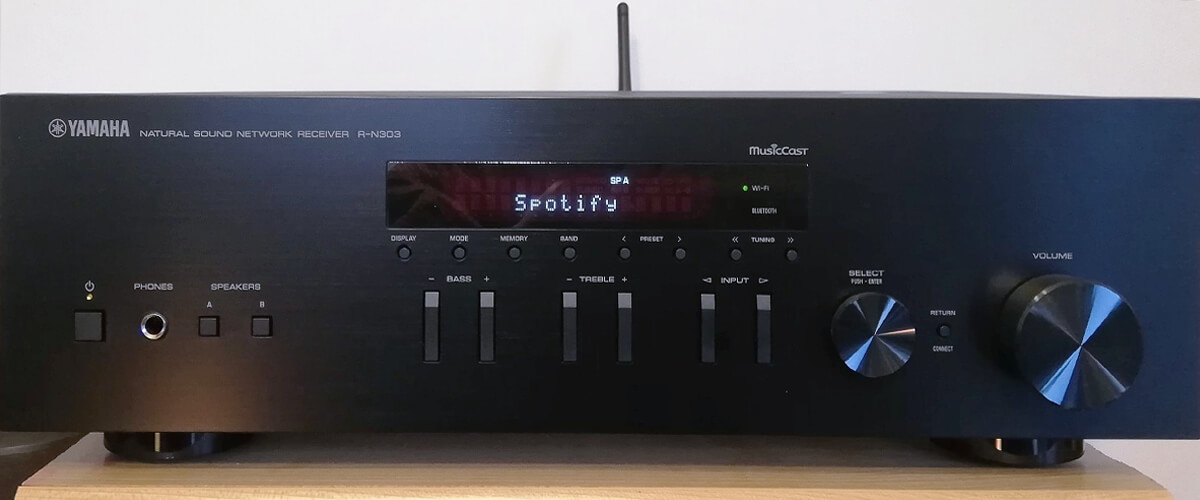
Basically, that’s about it. I’d choose the Yamaha R-N303 if I were you if you’re in the mood for high-quality music in every corner of your home. But if you’re willing to pay twice as much but still get 4K video streaming capability, then your choice is the Marantz NR1200. You can’t go wrong either way with their low cost and guaranteed quality.
Marantz NR1200 key specs
- Channels: 2.2.
- Power output: 75W/8 Ohm, 100W/6 Ohm.
- HDMI inputs/outputs: 5/1.
- Video functions: 4K/60Hz pass-through.
- Bluetooth/Wi-Fi: yes/yes.
- Streaming services: AirPlay2, TuneIn, Spotify, Pandora, SiriusXM, Amazon Music HD, TIDAL, Deezer, iHeart Radio, Napster, SoundCloud, Mood Mix.
- Supports: HDMI ARC, HDMI CEC, HDCP2.3, HDR10, HLG.
- Surround sound: has not.
Yamaha R-N303 key specs
- Channels: 2.0.
- Power output: 140W/8 Ohm.
- HDMI inputs/outputs: 0/0.
- Video functions: has not.
- Bluetooth/Wi-Fi: yes/yes.
- Streaming services: Pandora, Napster, Spotify, SiriusXM Internet Radio, TIDAL, Deezer.
- Surround sound: has not.
Marantz NR1200
Yamaha R-N303
FAQ
Is Marantz known for a warmer sound signature compared to Yamaha?
How do Marantz and Yamaha compare in terms of price?
How do the user interfaces of both brands compare?
How do Marantz and Yamaha compare in terms of build quality?
We are supported by our audience. When you purchase through links on our site, we may earn an affiliate commission at no extra cost to you.
Our newsletter
* We will never send you spam or share your email with third parties

![Best Budget Receivers [Reviewed and Tested]](https://thetechholics.com/wp-content/uploads/2023/10/best-budget-av-receiver-300x150.jpg)
![Best 9-Channels AV Receivers [Reviewed and Tested]](https://thetechholics.com/wp-content/uploads/2023/10/best-9-2-receiver-300x150.jpg)

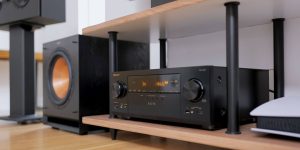
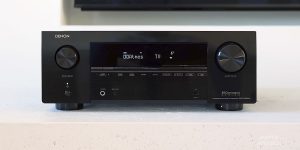
![Pioneer vs Denon Receivers [Top Models Compared and Tested]](https://thetechholics.com/wp-content/uploads/2023/10/denon-vs-pioneer-review-300x150.jpg)
